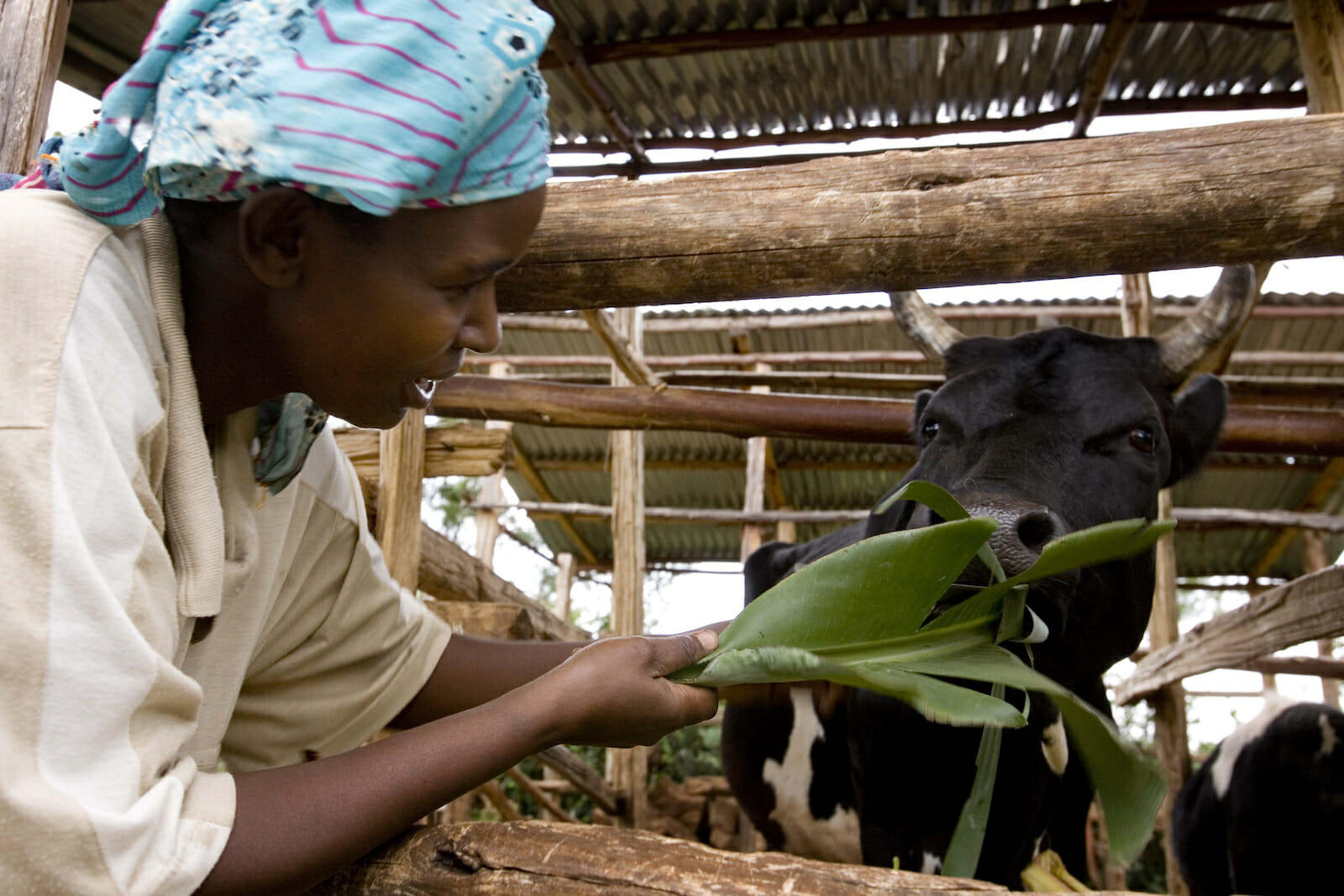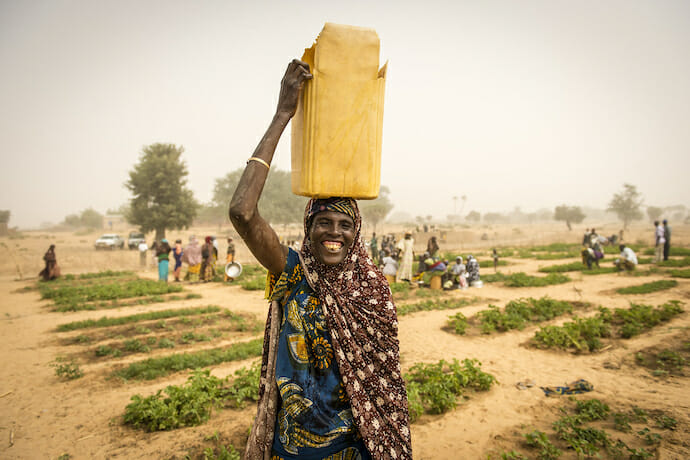
Will the AfCFTA Open the Gateway for Women in Agribusiness?
The advent of the African Continental Free Trade Agreement (AfCFTA) was well received and it is hoped that it will open new frontiers for trade in goods and services between African countries that for decades have constituted the lowest of any geographical region. While Africa reels over food and nutrition insecurity, there is over $4 billion worth of food loss in the continent that could be salvaged by using trade mechanisms that remove structural and institutional constraints to facilitate the movement of food from places of excess to places where they are most needed.
Although increasing food production remains crucial, the incentivization of efficient practices for food production is inevitable and will easily be promoted through market mechanisms that spurs agribusiness transactions to generate revenue cost-effectively for smallholder farmers.
The AfCFTA represents the injection of a new dynamism into Africa’s development using a regional approach that opens a new canvas for generating development solutions and shared prosperity. It also offers the opportunities for risks and disaster response using timely and efficient sourcing and supply of resources like food and water and the delocalization of early warning systems. This embodies the ‘Africa we want’ as envisioned in Africa’s Agenda 2063 with the maximization of inclusiveness.
The changes in the movement of goods and services envisaged under the AfCFTA rekindles the plight of the informal economy operatives and beams the spotlight on women who have always strived to move food products around locations and across borders but often without institutional support and access rights to produce. This raises expectations whether there will be genuine reforms to curb the intrinsic gender-based malpractices in cross border trade to allow for women and youth empowerment in the new market space. As the new guardrail for regional trade, the AfCFTA is expected to be characterized by a carefully designed regulatory framework that creates the ecosystem capable of spurring entrepreneurship. How feasible and achievable these expectations are is deeply rooted and underscored by the political momentum and determination of African leaders that have characterized the process so far.
The role of the market is indispensable in achieving Africa’s development ambitions embodied in the SDGs and in Agenda 2063, particularly on food and nutrition security for its people. It is obvious that subsistence farming alone is not enough to wean the continent off of food insecurity. Subsistence production is estimated to provide about 60% of total household consumption leaving the rest to be sourced elsewhere using the marketplace. Additionally, a contributory factor to the fragility of sub-Saharan Africa lies in the externalization of its food supply system. Thus, this is not just a problem of producing more but also of distribution of what is produced.
The food system and the food economy must be nationally-owned and internally driven. Unfortunately, according to the World Bank, the trend in consumption expenditure in sub-Saharan Africa has increased exponentially since 2005 with more than a third of this on food products. Regrettably, this is dominated by consumer-oriented imports of which food and agricultural products that have increased ten-fold from $5 billion to $50 billion over the past 20 years. The food price riots that rippled across Africa in 2008 are a reminder of the vulnerability in outsourcing Africa’s food supply. This constitutes a dangerous time bomb in the face of the continent’s accelerated population growth and rapid urbanization occurring in misalignment with the rate of food production.
Under the rapidly increasing global shocks posed by climate change and market fluctuations, the AfCFTA might just have ushered in a new policy space in re-interrogating Africa’s food systems in order to devise novel approaches and inclusive modalities. This is crucial in expanding and coupling internal actions in mitigating the escalating dependency on global food supplies that often exhibit heterogeneous structures and decreasing resilience under increasing connectivity in supply. A thriving food system with expanded transactions and diverse actors following the inclusion of women and youth is likely to promote sufficiency, efficiency, and prosperity for all. This raises the question: why target women as the change lever for Africa’s food system?

Women are key actors in the food economy of Africa stretching from production where they constitute about 40%, processing 80%, distribution 70%, and over 90% in the sales of ready to consume food in West Africa, for instance. Yet their contributions in the commercialization of food and transforming subsistence agriculture from a subservient way of life into a business, have encountered major structural barriers and demotivation. The active participation of women could just be the new stimulus that Africa needs in spurring economic transformation.
With women constituting half of those who are self-employed as private sector operatives, there are opportunities in harnessing this in expanding employment creation. The current dominance of women in the informal sector is estimated to be 84% share of total employment in 2011 and with a substantial contribution to the economies of sub-Saharan Africa worth 55% of the GDP of the region. Therefore, it is smart to enhance women’s economic activities to unlock new areas for economic growth. Opening access to women for instance, in global value chains and in the development of regional value chains capitalizing on the AfCFTA, especially as entrepreneurs who generate incomes rather than simply just earning wages as agricultural workforce, is transformational following the resonance this can have in family wellbeing and the social cohesion of communities. As these are emerging opportunities however, harnessing these opportunities optimally will require investment in readiness programmes to build individual skillsets and institutional capacity, the promotion of women entrepreneurship, and the use of regulatory and policy reforms.
There are emerging opportunities in designing regional food systems to enhance food security in Africa. This requires preparedness in using the market to provide the pull factor for the aggregation of interconnected information about a specific set of foods, their supply chains, and revealing the opportunities they hold in the region to enhance their production and distribution. The food economy of West Africa, for instance, is estimated to be $178 billion in 2010 representing 36% of the regional GDP. The regional food market now dominates emerging economic opportunities. This requires the preparedness in making a significant shift from subsistence-based to a market-based system for the food economy that is driven by Africa’s human resource endowment of women and youth.
Leveraging on technological innovations creates new pathways and opportunities for empowering women in generating prosperity under the AfCFTA. These include raising the value from agriculture and promoting inclusivity in the development of regional value chains. Building the capabilities of women and reinforcing the establishment of women networks will strengthen their capabilities in readiness for emerging opportunities for co-creation and co-ownership of regional value chains, to expand revenue generation. The ability to harness technology will further expand the opportunity to shorten food supply chains for profit and health by reducing the amount of food preservatives in food consumed. As consumer preferences and niche markets emerge, the demand for traceability and certification are increasingly driving consumer’s choices and satisfaction that will likely become entrenched criteria that require tailored skillsets for their realisation and compliance.
While there is acclamation of trading opportunities in goods under the AfCFTA, there is also the potentials for trading in human services that is more rewarding for Africa’s development mindful of the unevenness in human capital development across the continent. This constitutes a new contour for job creation and self-employment that requires preparedness. The provision of integrated services harnessing networks and platforms in generating shared prosperity will be easily promoted.
Under the current digital revolution, it is absurd to lock out trade transactions generating revenue informally. Instead, there should be an urgency to institute a regulatory framework to safeguard secure transactions. Training of government officials such as customs, frontier police, etc. to adapt to the new ecosystem will be crucial. Stepping up advocacy for the formalisation of women’s access using gender-sensitive procedures and affirmative actions will facilitate engendering the AfCFTA. The establishment of digital platforms will enhance the creation of diverse and connected rural economies facilitating the provision of logistics and supply chain information and better communication in promoting cost reduction in moving goods and services.
There are multiple catalytic transitions that could be triggered by the AfCFTA. This includes transitioning from the global value chain to predominantly regional value chains for food that internalizes management of food insecurity. It should kick start reverse ownership and delocalization of the current food systems in Africa to better prioritise producing for consumption and not just for cash generation, and in changing the policy dichotomy between cash crop and food crop productions of colonial heritage that has amplified gender inequality in agriculture and undermine food security in the continent. Leveling the playing field to embrace gender equality that opens the gateway to all stakeholders and shareholders must be the hallmark of the AfCFTA. This will be an important milestone and metric of achievement by the AfCFTA.
The views expressed in this article are those of the author alone and do not necessarily reflect those of any institutions with which the author is associated.

